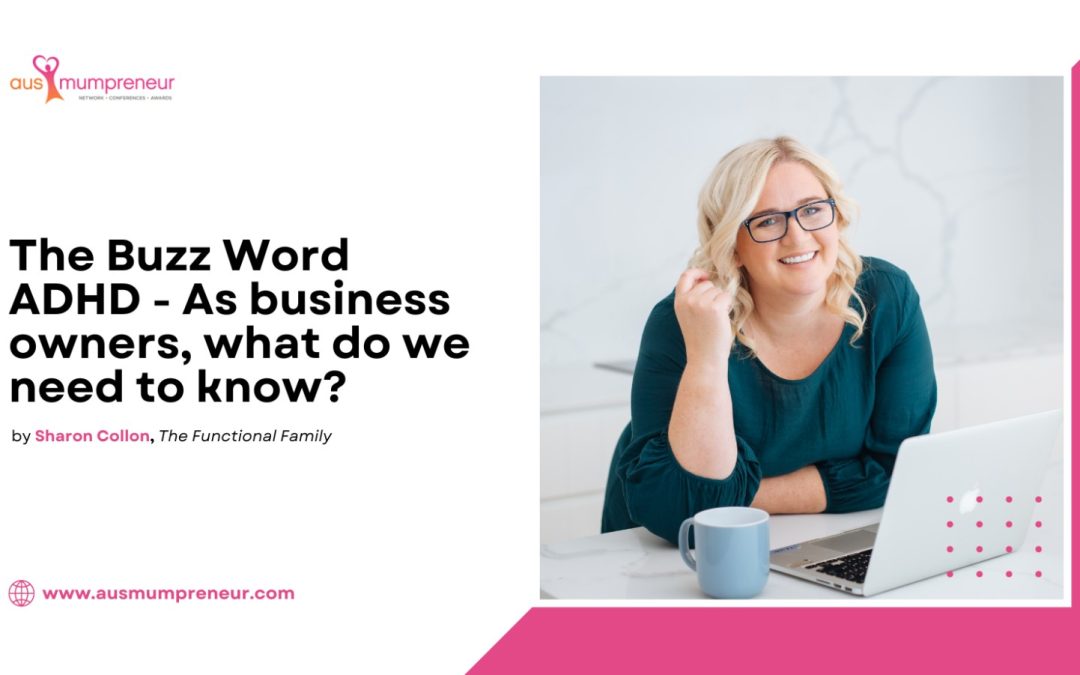ADHD is a hot topic right now and it may seem like every celebrity is coming out with a press release announcing that they have ADHD. But what actually is ADHD and what, as women entrepreneurs, do we need to know about it?
ADHD is still underdiagnosed, especially in women. The reason being is in males it tends to show the physical hyperactivity component and as a result they get diagnosed early. However, for women, it can look different. Women usually learn to mask their ADHD symptoms early and their hyperactivity can be inside their brain (rather than in their body) so it ends up looking a lot like anxiety.
One in 20 Australians have ADHD so chances are you already have an employee or family member with ADHD. Learning to work with the ADHD brain can have incredible advantages for you and your business.
As the prevalence of ADHD diagnoses continues to rise, understanding this condition can significantly benefit both employers and employees. In this blog post, we will explore what business owners need to know about ADHD and how working with the ADHD brain can be an asset to your workforce.
What is ADHD?
ADHD (Attention Deficit Hyperactivity Disorder) is a neurodevelopmental disorder that affects both children and adults. It is characterised by a persistent pattern of inattention, hyperactivity, and impulsivity that can interfere with daily functioning. The symptoms of ADHD can vary from person to person, but they often include difficulty concentrating, forgetfulness, restlessness, and impulsive behaviour. People with ADHD struggle with executive functions.

Executive dysfunction is a term used to describe faults or weaknesses in the cognitive process that organises thoughts and activities, prioritises tasks, manages time efficiently, and makes decisions. Executive function skills are used to establish structures and strategies for managing projects and to determine the actions required to move each project forward. Children and adults with executive dysfunction often struggle to organise materials, regulate emotions, set schedules and stick with tasks. They misplace papers, reports, and other school materials. They might have similar problems keeping track of their personal items or keeping their bedroom organised.
As an ADHD coach and consultant, this is what we are trained to support people with. The good news is executive functions are just like a muscle, we can build them.

In Australia we recognise 3 types of ADHD:
Inattentive
Combined (inattentive and hyperactive)
Hyperactive
ADHD strengths in the workplace:
Diverse Talents and Creativity:
People with ADHD often possess unique talents and creative problem-solving skills. Their ability to think outside the box can be a valuable asset in a business environment that requires innovative solutions and adaptability.
Pattern recognition and spotting things neurotypical people miss – often people with ADHD are incredible at spotting these types of things.
Hyperfocus:
While individuals with ADHD may struggle with maintaining focus on routine tasks, they can also experience periods of hyperfocus, during which they become exceptionally dedicated and productive. This intense focus can lead to remarkable results when channelled correctly.
Energy and Enthusiasm:
Many individuals with ADHD are known for their boundless energy and enthusiasm. This can be infectious in a team setting and help maintain a positive work environment.
Energy and Enthusiasm:
Technology empowers mumpreneurs to forge connections not just within Australia, but also across the globe. By leveraging social media platforms, engaging with networking apps, and participating in virtual events, they can construct a diverse and supportive community.
This network serves as a vital resource, offering opportunities to learn, share experiences, and grow both personally and professionally. It’s an invaluable tool for mumpreneurs seeking to expand their knowledge, reach, and success in today’s digital age.
Supporting Employees with ADHD
Flexible Work Arrangements:
Allow employees to tailor their workspaces and schedules to suit their individual needs. Flexible arrangements can help individuals with ADHD manage their time and environment more effectively.
Clear Communication: Maintain clear and open lines of communication. Providing concise instructions and setting clear expectations can help employees with ADHD stay on track and reduce misunderstandings.
Accommodations:
Be prepared to provide reasonable accommodations, such as noise-cancelling headphones, task management tools, or alternative workspaces, to help employees with ADHD stay focused and organised.
Breaks and Rewards:
Encourage regular breaks and incentives for employees to stay motivated. Short, frequent breaks can help individuals with ADHD recharge and maintain productivity.
Bodydoubling – Body doubling is a tool some adults use to help them start and complete projects. Sometimes referred to as an accountability partner, it is a technique for better productivity. A body double is a friend or partner who works simultaneously, either in the same room or virtually through video chat platforms.
Coaching and Support:
Consider offering coaching or mentorship programs that help employees with ADHD develop strategies for managing their unique challenges and leveraging their strengths.
Coaching and Support:
Consider offering coaching or mentorship programs that help employees with ADHD develop strategies for managing their unique challenges and leveraging their strengths.

ADHD is not a limitation; it’s a different way of thinking and processing information. Business owners who understand and embrace the diverse talents and strengths of employees with ADHD can create a more inclusive and dynamic work environment. By providing support, accommodations, and clear communication, you can tap into the unique qualities that individuals with ADHD bring to your team. Embracing these talents can lead to increased creativity, innovation, and overall success in your business.




